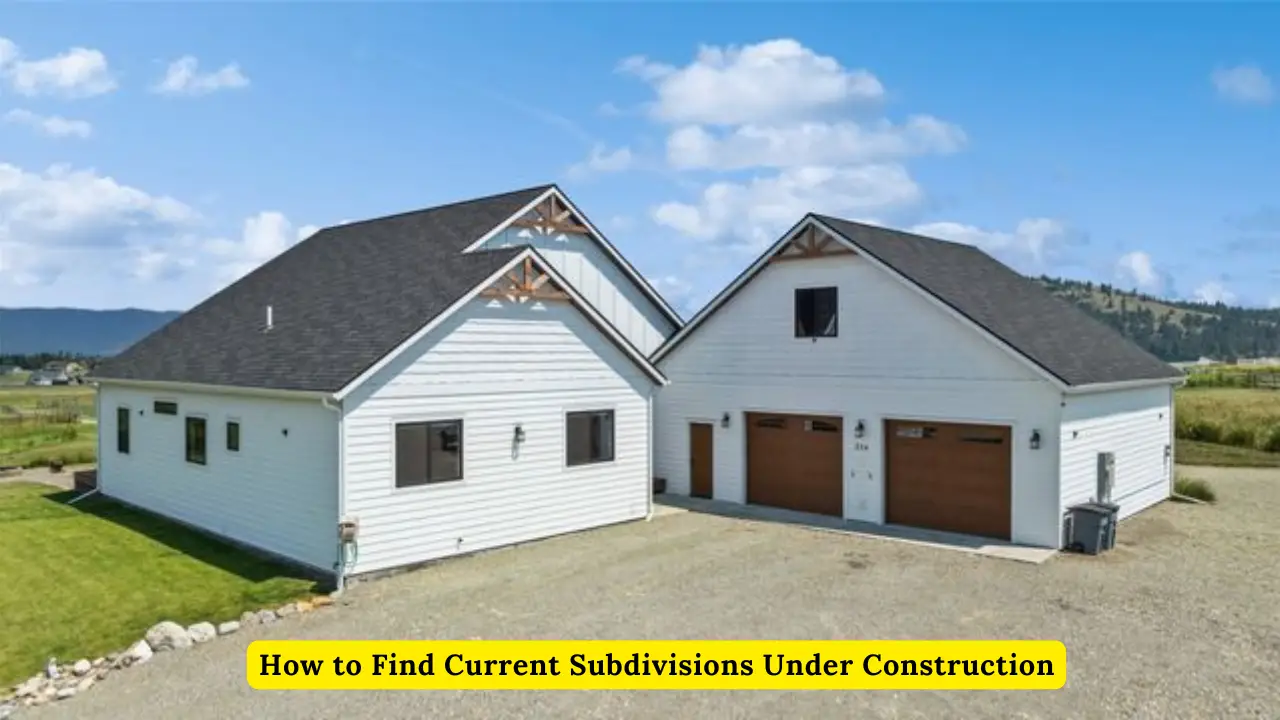If you are interested in real estate investment or looking for a new home, identifying current subdivisions under construction can offer excellent opportunities. These developments often provide modern amenities, new infrastructures, and a chance to be part of a growing community. In this guide, we will explore various methods to help you discover new subdivisions under construction in your desired area. How to Find Current Subdivisions Under Construction
Why Consider Subdivisions Under Construction?
1. Access to Modern Amenities
New subdivisions are typically equipped with the latest features and technologies. This can include energy-efficient homes, smart home systems, and community amenities such as parks, pools, and clubhouses. Investing in a newly constructed subdivision can ensure you have access to these contemporary benefits.
2. Potential for Increased Property Value
Buying property in a developing subdivision can offer the potential for significant property value appreciation. As the area develops and more infrastructure and amenities are added, the value of homes in the subdivision is likely to increase. This makes it an attractive option for real estate investors and homeowners alike.
3. Community Engagement
New subdivisions often attract a diverse mix of residents, creating vibrant and dynamic communities. Being part of a new development can provide opportunities for social interaction and community involvement, enhancing your overall living experience.
Methods to Find Subdivisions Under Construction
1. Online Real Estate Platforms
One of the most efficient ways to find new subdivisions is by using online real estate platforms. Websites such as Zillow, Realtor.com, and Redfin allow you to search for new construction homes by entering specific criteria such as location, price range, and home type. These platforms often provide detailed information about each property, including construction status, floor plans, and available amenities.
2. Contact Local Real Estate Agents
Real estate agents are invaluable resources when searching for new subdivisions. They have access to the latest information about developments in your area and can provide insights into the local market. Working with a knowledgeable agent can help you find subdivisions that meet your criteria and guide you through the buying process.
3. Visit Developer Websites
Major real estate developers often list their upcoming projects on their websites. By visiting these sites, you can gain information about new subdivisions under construction, including project timelines, features, and pricing. Some developers may also offer virtual tours and interactive maps to help you visualize the development.
4. Attend Local Real Estate Events
Local real estate events and open houses are excellent opportunities to learn about new subdivisions. These events often feature presentations from developers, showcasing their latest projects. Attending these events can provide firsthand information and allow you to ask questions directly to the developers.
5. Explore Local Government Planning Departments
Local government planning departments maintain records of new developments and construction projects. By visiting the planning department’s website or office, you can access information about approved subdivisions and those currently under construction. This method provides reliable and up-to-date information straight from the source.
6. Utilize Online Maps and Satellite Imagery
Online maps, such as Google Maps, can be used to identify construction activity in your area. By examining satellite imagery and street views, you can spot new developments and gauge their progress. This method allows you to visually assess the construction site and surrounding area.
Factors to Consider When Choosing a Subdivision
1. Location
The location of the subdivision is a critical factor to consider. Evaluate the proximity to schools, workplaces, shopping centers, and public transportation. The location should align with your lifestyle and daily needs.
2. Developer Reputation
Research the reputation of the developer responsible for the subdivision. Look for reviews and testimonials from previous buyers to ensure the developer has a track record of delivering quality projects on time.
3. Community Amenities
Consider the amenities offered by the subdivision. Amenities such as parks, recreational facilities, and security features can significantly enhance your living experience.
4. Future Development Plans
Investigate the future development plans for the area surrounding the subdivision. Upcoming commercial or residential projects can impact property values and the overall appeal of the community.
Conclusion
Finding current subdivisions under construction requires research and exploration, but the rewards can be substantial. By utilizing online resources, engaging with real estate professionals, and exploring local government information, you can discover promising new developments in your desired area. Whether you are a homebuyer or an investor, these methods can help you make informed decisions and take advantage of exciting opportunities in the real estate market.
